- Home
- James David Victor
Conquest of Earth Page 2
Conquest of Earth Read online
Page 2
FZZT!
Jezzy was punched back into her chair as the ESR rocketed forward, and multiple alarm sirens went off inside the craft.
ESR Mainframe: Craft Compromised. Hull damage at Rear Plate 13…
But in less time than it took to blink an eye, Jezzy and the octoid sphere that she sat in were hurtling forward. The four lines of lights flashed into a blur, and suddenly the sensation of force and propulsion was gone. She was shooting out of the side of the Invincible and into the wreckage field that had once been the Rapid Response Fleet.
ESR Mainframe: Proximity Warning! Undertaking Automatic Evasive Measures!
The console screen in front of her bleeped as the Marine saw the rising edge of a piece of Confederate Marine Corps battleship coming straight for them. With a gut-wrenching lurch, the ESR fired its left-hand positional rockets perfectly, spinning her view around as they shot past it, only to fire the rockets on the other side to avoid the next collision.
Jezzy was in the wreckage of an entire battlegroup of ships, set against the backdrop of the embattled Red Planet.
The Martian separatists—the ‘Chosen of Mars’ or the ‘First Martians,’ as they called themselves—had successfully fought off the Marine Corps’ attempts to return control of the Red Planet to the Confederacy, with the help of the Ru’at. But its surface was still scarred and smeared by ugly black clouds where the CMC (Confederate Marine Corps) had fired ‘demonstration’ nukes to force a capitulation.
It hadn’t worked, and when the actual Ru’at jump-ships had appeared in Martian space, they had made short work of the Confederate ships.
ESR Mainframe: Unknown Craft on Intercept Course!
The control console blared at her, and it was as if Jezzy’s worst nightmares had all come true at once. There, rising out of the wreckage, was one of the Ru’at jump-ships, and it was heading straight for her.
2
The Future of Humanity
“We have a winner!” Solomon Cready, First Lieutenant of the Outcast Marines, replayed the clone’s words in his head, over and over.
What? It was still as confusing now as it had been when he had first heard it, almost an hour ago on the arena floor.
Despite his current state of near-collapse, the exhaustion that shook his limbs, the glaring white light that filled his eyes, and the terrible wound that ran down one side of his back, Solomon found that his thoughts felt enervated and electric. They jumped and buzzed over his memories, recalling every word, every movement, every detail of the terrible deathmatch that he had just been a part of.
I wonder if this is what happens when you’re about to have a full-system collapse, he thought a little wryly. A last parting gift from his body’s enhanced genetics before he passed irrevocably into shock.
The lieutenant currently lay on his back on a cold slab of steel, trying to not look directly into the blinding white lights above. He didn’t know how he had gotten here, but he remembered the clone’s final words after Solomon had won the fight against the cyborg Ru’at.
“The Ru’at have judged, and the Ru’at have decided. The new general of their invasion fleet, and the commander of their cyborg forces, will be H21 Solomon Cready!” the clone had announced with apparent glee, and perhaps even a little pride, Solomon had to wonder.
He was still in the Ru’at colony on Mars, stuffed full of cyborgs, clones, and apparently brainwashed Martians. The only ‘true’ alien that they had encountered had been Solomon’s challenger—a creature that he, along with the renegade Outcast Marine Kol, Ambassador Ochrie of Earth, and Mariad Rhossily, the Imprimatur of Mars, had seen ‘born’ from the strange bio-nursery under their very feet.
That creature was a monster, Solomon thought. A wide and pronounced predator’s jaw, mottled ochre and black skin, backwards-jointed legs, and double-elbowed arms. But that was only the start of the thing’s strangeness. Their Ru’at captors—who had so far only revealed themselves in the form of a floating drone sphere—had then encased the creature in steel and silver, turning it into an alien cyborg the likes of which neither Solomon nor any other Marine Corps officer had ever encountered.
And I beat it, the young man thought. Although any human physician would probably say that it had killed him in the process, given his current condition.
“Patient is secure,” a voice purred into Solomon’s awareness, and it was a voice that he recognized.
“You…” he managed to croak, flopping his head to one side to see the familiar form of the older human man with frosted white hair, dark skin, and a perfectly white-silver encounter suit.
“You’re not real,” Solomon murmured as he thought of the first time that he had met the man. It had been when he and the other human captives were first brought to the colony. Each of them was meant to enter the Ru’at ‘judgement chamber,’ where they would be brainwashed into serving their new alien masters in every possible respect.
That was what had happened to Ochrie, after all. Solomon attempted to struggle, but his ankles, wrists, and midriff wouldn’t budge.
This man had been a ‘human-friendly’ hologram generated by one of the Ru’at orbs, who had explained to the lieutenant how he wasn’t ‘Solomon Cready’ at all. He was in fact ‘H21’—an experimental bio-program who had been cloned from the original Solomon Cready back on Earth.
“Begin the procedure,” the human-friendly hologram said with a hint of a smile. He appeared in every respect to be considerate, kindly, even empathetic as he regarded the clone-Solomon on the table.
“Frack you,” Solomon coughed. It was starting to hurt when he breathed. The wound on his back was like a line of molten lava igniting into life every time he tried to fill his lungs. “What procedure?”
“H21, First Lieutenant Cready,” the man finally addressed him directly.
“Solomon. My name is Solomon…”
“The Ru’at are pleased with your performance. There have always been two camps within the Ru’at—those favoring machine and cybernetic solutions, and another that posits that no machine can be as complex or as adaptable as bio-genetics,” the man said in a grandfatherly, lecturing sort of way. “You are the proof that the latter camp is, in fact, correct.”
“Let me go! Why should I care at all what weird politics you monsters have?” Solomon hissed.
“You don’t have to, of course,” the man purred in his rich, warm voice. Solomon wondered if the Ru’at had projected him here just to make him more accepting.
“But it doesn’t particularly matter what you care for or not, Solomon.” The holographic man nodded when he used his real name. “This is who you are. What you are. What you were always meant to become.”
“Frack you,” Solomon managed. He knew it was a petty revenge, and that insults were always the least intelligent way to make a point, but he sure did feel a whole lot better for it, all the same.
“You will understand soon, H21. You have come home. To your real family.”
Suddenly, pain lanced into Solomon’s body. He thought it was originating somewhere around his legs, but he couldn’t be sure, given the omnipresent waves he was experiencing.
“Ach!”
“You must let go, H21. Let go of the human that you think you are.”
Solomon’s mind fluttered toward consciousness, heavy with the words of the hologram.
He opened his mouth to speak, meaning to say something like ‘What are you talking about?’ but instead all that came out was a wordless sigh.
(What have you done to me!?)
“The genetic structure that is written into your DNA is only partly the product of Earth,” the voice continued. Solomon couldn’t see anything but white light. He wasn’t even sure if his eyes were open, or if all of this was somehow being transmitted straight into his brain.
But the pain had gone. In fact, all sensation had gone.
“The Message that we sent to Earth a hundred Sol-cycles ago carried with it the technology to alter rhizomatic and bacterial dev
elopment,” the voice continued.
Rhizomes… The part of Solomon’s mind that was still Solomon tried to remember his scant astrobiology lessons. Rhizomes were a sort of fungus, weren’t they? Microscopic life inside Earth soil that allowed plants to talk to each other, wasn’t it? Solomon distantly remembered the Oracle—the study computer of the Ganymede Training Facility—opening a lesson with the words ‘rhizomes were the basis of all life.’
“When the Ru’at first began their salvation of the galaxy, they soon encountered a problem—”
Good! Solomon didn’t say.
“That of distance. Consider this. Sol’s tenth planet, Eris, lies some fifteen BILLION Confederate-standard kilometers from Earth. A few hours’ hop in one of your jump-vehicles, perhaps, but still all communication you have available to you takes hours to reach the home world.”
So?
“Of course, the Ru’at’s faster-than-light drive—what might translate into human English as a photon wave generator—makes short work of Sol distances, but they are nonetheless staggering.”
Solomon knew what the hologram must be getting at. And the Sol system was only average, a small to medium system floating in the sea of space. The distances to the nearest star of Alpha Centauri and the Confederacy’s most distant colony of Proxima would be many, many times that fifteen billion kilometers.
And as yet, Solomon realized, they hadn’t even begun to discuss how far the Ru’at home world was. It could conceivably be only a little further along in their own spiral arm of the Milky Way galaxy, and still it would be impossible, given those sorts of distances, to ever communicate with them.
Well, to communicate, and for a message to reach them at anything under a hundred years or so, Solomon knew. Which he guessed was why the Ru’at had started their invasion process a hundred years ago, with the physical orb-like probe known as ‘The Message.’
“In their superior wisdom, the Ru’at realized that it was impossible to spread their offer of civilization to the rest of the galaxy through the clumsy, and painstakingly slow, habit of negotiation and debate,” the voice said.
“But what they realized was that there was another way.”
Solomon wondered if he really wanted to hear this. Unsurprisingly, it turned out that he didn’t have much choice.
“The idea of sending a representative, or an ambassador, over lifetimes of space just to engage in a futile and shocking negotiation is unproductive,” the voice continued, “especially if we consider the fact that there are many other forms of communication, and data. Biology is communication. So is code. The Ru’at realized that they could send their message of hope to the furthest reaches of the galaxy by encoding it inside one of two types of information: machine language or genetic coding.”
So, that was what this was all about? Solomon thought. Their sending an alien probe to his home world, to alter the very biology of Earth, was the Ru’at version of a hello!?
“I can tell from your facial expressions that you are resistant to this idea. But you will understand its significance shortly. You must stop seeing yourself as an individual homo sapiens, but as a part of a wonderful and rare force. Biology. Life.”
The hologram went on, much to Solomon’s annoyance.
“Life is rarer than you think in the universe. The Ru’at should know. They have done this many times. The Ru’at seek to preserve life itself, and to encourage it. To help it to adapt and grow into the type of organism that can withstand this dangerous cosmic cradle we find ourselves in.”
It was all very well and good. Solomon could have growled if he had any control over his face, but this was all pretty, flowery language and poetry for what was essentially an alien invasion, wasn’t it?
Why didn’t the Ru’at allow humanity to develop on their own? Become their own sort of inter-stellar organism? What gave the Ru’at the right to act as gods with Earth’s essential genetics?
“As I indicated before, the Ru’at have long debated the merits of using machine code as a form of information, which worked spectacularly well here in Sol, given the uptake in cybernetic technology thanks to the Message. But you—yes, you, H21—are the proof that it is biology itself which will prove the Ru’at’s crowning accomplishment.”
Solomon didn’t want to be anyone’s crowning anything.
“You have marked an epochal shift in Ru’at direction, and quite possibly the future of intelligent civilization throughout this galaxy, at least!”
Yay me, Solomon thought.
“We are remaking your body, H21. The Ru’at are activating your still-as-yet dormant RNA and DNA, as well as eliminating all of the non-essential junk-gene fragments inside of you. You will become a new man, a new being. You will become everything that homo sapiens and the Ru’at were meant to achieve—together!”
What Solomon tried to say but couldn’t, given the alien technology employed against him, was something that would have scorched the air.
“And now, H21, prepare to let go of your previous life and become all that you were meant to be. All that you were designed to be!”
And that was when the pain really began for the genetic experiment known as Solomon Cready.
3
On the Uses of Thermonuclear Devices
The Ru’at jump-ship was heading straight for Jezzy.
She felt her skin inside her power armor clearly drop a degree or two, and all the hairs on her arms and neck stood up. She was more agitated now than she had been when woman-handling a mega-ton thermonuclear device.
Because if I get this wrong now, then everything that I have tried to do will be for nothing, Jezzy thought. This entire mission that she had coordinated—‘Lifeline,’ as she had optimistically called it—had been about getting much-needed oxygen to their borrowed ship and causing a distraction so they could infiltrate the Martian atmosphere.
And save First Lieutenant Cready, Jezzy knew. Who was still down there, as a captive and hostage of the Ru’at.
“I see you, sucker…” She glared at the object, her earlier agitation transforming perfectly into rage. How dare these things come here, to our solar system, just to frack everything up! What did they want? Resources? Oil? Gold? Food? None of these things made sense when compared with the vast interstellar distances that their ships had to travel, and the advanced technologies they had to employ in order to get here.
Jezzy knew from her astrophysics lessons—just enough to get by, unfortunately—that there had to have been at least a hundred thousand different worlds with those resources before they got to Earth and the Sol System.
So what made Earth different? What made Earth so attractive a target that they would put into place a hundred-year plan to invade it?
Life, obviously.
It was all tied up with the Ru’at cyborgs, wasn’t it? The thoughts flashed through Jezzy’s brain as she searched for the ESR’s weapons.
ESR Mainframe: Offensive Capabilities…
>>> Front-loaded 25mm Heavy Vacuum Rifles x2
“Ridiculous,” she assessed. Although a 25mm shell could be devastating on Earth, in space, it was rare to find any sort of ship with a hull less than 60 or 75mm thick, meaning that the shell had to be going phenomenally fast if you wanted to be able to do some damage.
Either that or have a very lucky shot, because to say that the targeting system in the ESR was basic would be like saying that the Invincible had been a little on the big side.
No, Jezzy knew that the vacuum rifles were mainly installed as a sense of completion for the CMC designers, as well as being able to obliterate smaller amounts of space junk or fire warning shots, not to actually engage in a ship-to-ship battle with a highly advanced alien species.
The ship in question was ominous in its almost featureless hull. Well, devoid of any human-looking features, anyway. Each Ru’at jump-ship appeared exactly the same: a cylinder of dark ochre and black metal with a pointed nosecone and some strange, indented areas along their main hull.
&nbs
p; The only features that did stand out, of course, were the three rotating rings around the belly of the craft, made instead of a shinier, obsidian sort of material. Jezzy watched as they rotated slowly with no apparent timing or rhythm between the rings, but she knew that they would rotate quicker and quicker until they blurred into a blackened halo as the strange craft moved faster. They eventually achieved what no human craft ever had: faster than light travel. All human vehicles used a Barr-Hawking jump-drive, and as yet they had been unable to create any material or energy field that could travel as fast as a photon or a neutrino.
These smaller Ru’at jump-ships looked surprisingly different from the mothership that Jezzy had seen in orbit around Proxima. That had been a vast disk, seemingly made of sympathetic machine parts with no external hull or superstructure to speak of. Jezzy remembered being overwhelmed by the apparent miles of churning cogs, pistons, pipes, industrial parts, and crystal cabling as thick as her ESR. If she didn’t know better, she would have said that the mothership bore all the hallmarks of a drone, but these much smaller Ru’at ‘attack’ ships, or ‘jump-ships,’ had solid outer shells that hid whatever machine internals they might have.
However, the rotating rings were at least functionally similar to the particle generators of the Confederacy’s jump-ships. These were small-bodied craft with gigantic rings attached around them, from which fired the four super-massive Barr-Hawking particle generators, thus creating the field. Nearly ninety percent of all Confederate ships did not have their own in-built jump drives. Instead, they ‘hitched’ a ride with one of the smaller jump-ships and were pulled along to skip over the surface of space-time itself.
“But I’ve got something that even you won’t be happy about, I’m sure.” Jezebel Wen, second lieutenant and former Yakuza agent, had a plan. She fired the forward vacuum rifles, already pulling down hard on the right side of the flight controls as she raised the left.

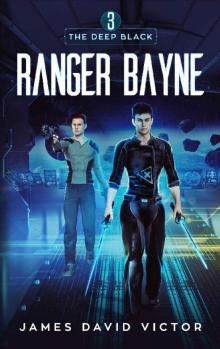 Ranger Bayne
Ranger Bayne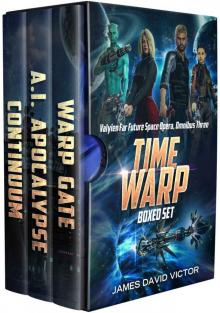 Valyien Boxed Set 3
Valyien Boxed Set 3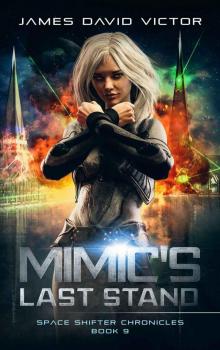 Mimic's Last Stand
Mimic's Last Stand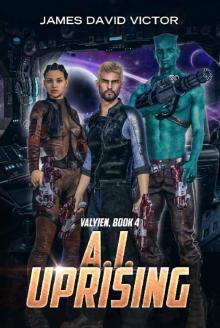 A. I. Uprising (Valyien Book 4)
A. I. Uprising (Valyien Book 4)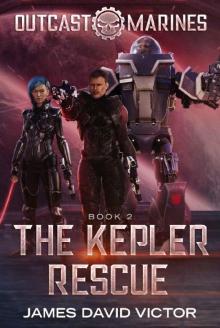 The Kepler Rescue
The Kepler Rescue Last Stand Boxed Set
Last Stand Boxed Set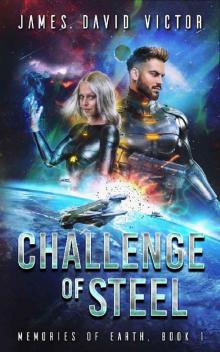 Challenge of Steel
Challenge of Steel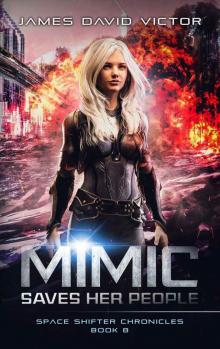 Mimic Saves Her People
Mimic Saves Her People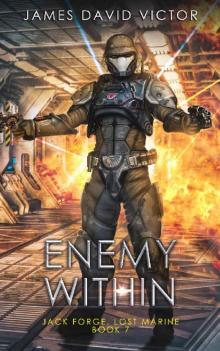 Enemy Within (Jack Forge, Lost Marine Book 7)
Enemy Within (Jack Forge, Lost Marine Book 7)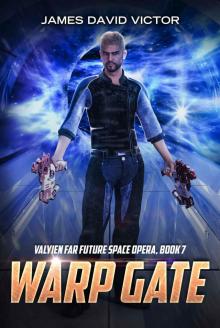 Warp Gate (Valyien Far Future Space Opera Book 7)
Warp Gate (Valyien Far Future Space Opera Book 7)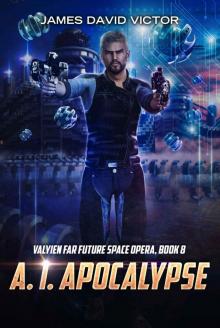 A. I. Apocalypse (Valyien Far Future Space Opera Book 8)
A. I. Apocalypse (Valyien Far Future Space Opera Book 8)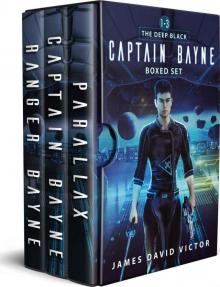 Captain Bayne Boxed Set
Captain Bayne Boxed Set Blue Star Marine Boxed Set
Blue Star Marine Boxed Set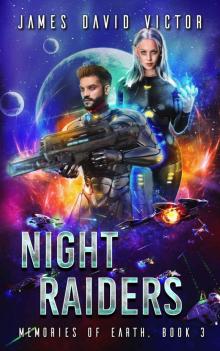 Night Raiders
Night Raiders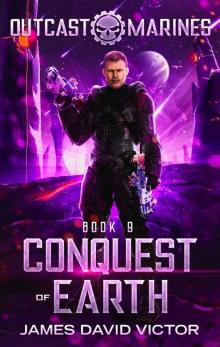 Conquest of Earth
Conquest of Earth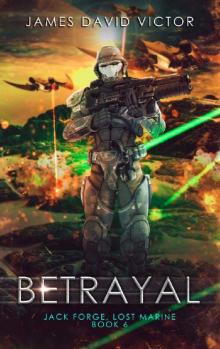 Betrayal (Jack Forge, Lost Marine Book 6)
Betrayal (Jack Forge, Lost Marine Book 6)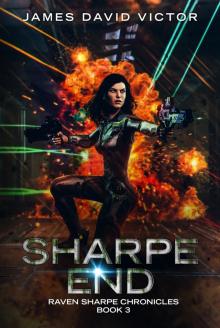 Sharpe End
Sharpe End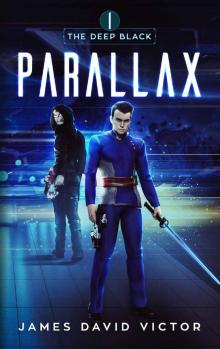 Parallax
Parallax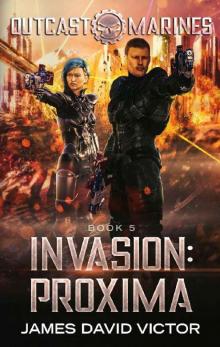 Invasion- Proxima
Invasion- Proxima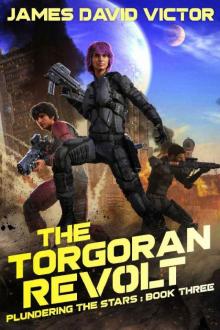 The Torgoran Revolt (Plundering the Stars Book 3)
The Torgoran Revolt (Plundering the Stars Book 3) Outcast Marines series Boxed Set 2
Outcast Marines series Boxed Set 2 Outcast Marines series Boxed Set
Outcast Marines series Boxed Set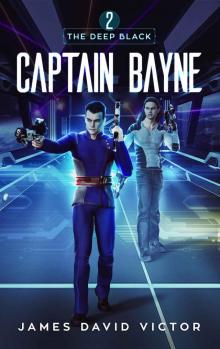 Captain Bayne
Captain Bayne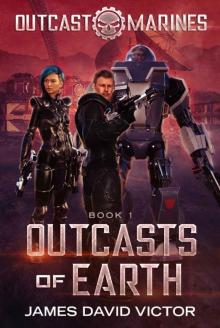 Outcasts of Earth (Outcast Marines Book 1)
Outcasts of Earth (Outcast Marines Book 1)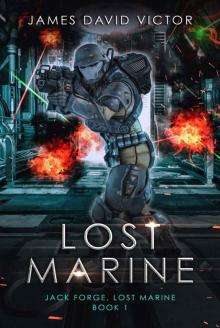 Lost Marine
Lost Marine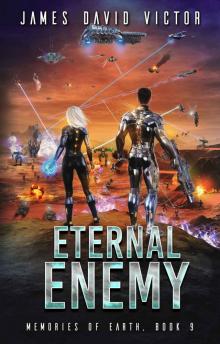 Eternal Enemy
Eternal Enemy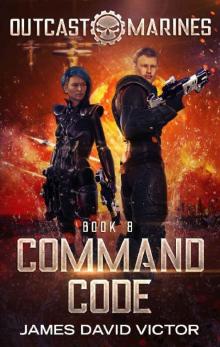 Command Code
Command Code Ranger Bayne (The Deep Black Book 3)
Ranger Bayne (The Deep Black Book 3) Mimic: The Space Shifter Chronicles Boxed Set (Books 1 - 9)
Mimic: The Space Shifter Chronicles Boxed Set (Books 1 - 9) The Deep Black Space Opera Boxed Set
The Deep Black Space Opera Boxed Set Federation at War (Blue Star Marines Book 1)
Federation at War (Blue Star Marines Book 1)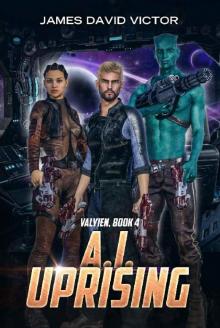 AI Uprising
AI Uprising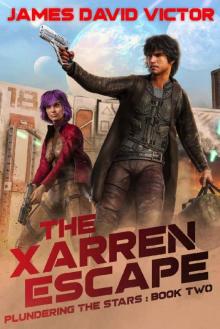 The Xarren Escape (Plundering the Stars Book 2)
The Xarren Escape (Plundering the Stars Book 2)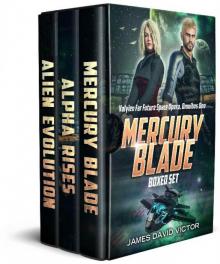 Valyien Boxed Set 1
Valyien Boxed Set 1 New Enemy (Jack Forge, Lost Marine Book 4)
New Enemy (Jack Forge, Lost Marine Book 4)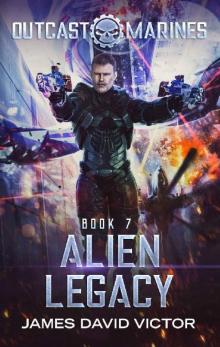 Alien Legacy
Alien Legacy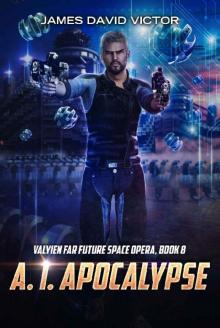 A I Apocalypse
A I Apocalypse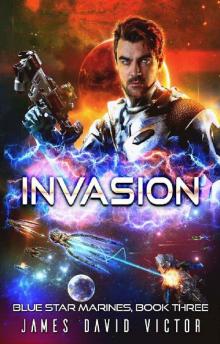 Invasion (Blue Star Marines Book 3)
Invasion (Blue Star Marines Book 3)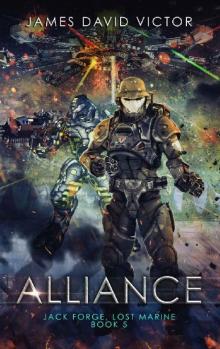 Alliance (Jack Forge, Lost Marine Book 5)
Alliance (Jack Forge, Lost Marine Book 5) Double Sharpe (Raven Sharpe Chronicles Book 2)
Double Sharpe (Raven Sharpe Chronicles Book 2)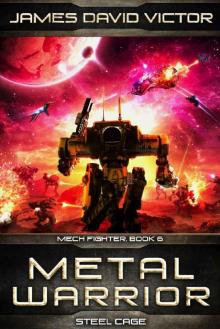 Metal Warrior: Steel Cage (Mech Fighter Book 6)
Metal Warrior: Steel Cage (Mech Fighter Book 6)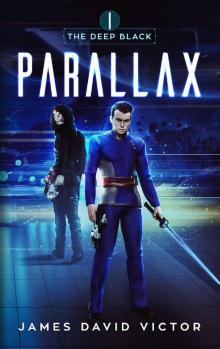 Parallax (The Deep Black Book 1)
Parallax (The Deep Black Book 1)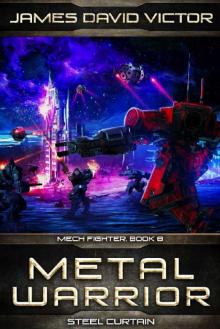 Metal Warrior: Steel Curtain (Mech Fighter Book 8)
Metal Warrior: Steel Curtain (Mech Fighter Book 8)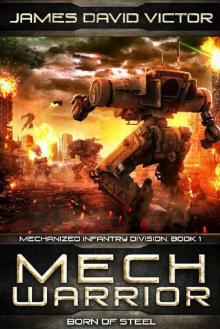 Mech Warrior: Born of Steel (Mechanized Infantry Division Book 1)
Mech Warrior: Born of Steel (Mechanized Infantry Division Book 1) Outcast Marines Boxed Set
Outcast Marines Boxed Set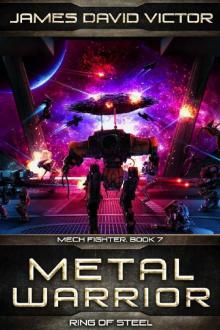 Metal Warrior: Ring of Steel (Mech Fighter Book 7)
Metal Warrior: Ring of Steel (Mech Fighter Book 7) The Elarri Heist (Plundering the Stars Book 1)
The Elarri Heist (Plundering the Stars Book 1)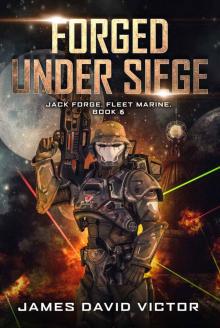 Forged Under Siege (Jack Forge, Fleet Marine Book 6)
Forged Under Siege (Jack Forge, Fleet Marine Book 6)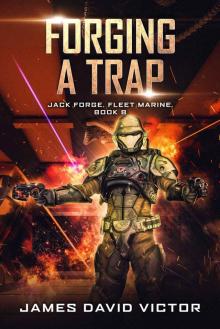 Forging a Trap (Jack Forge, Fleet Marine Book 8)
Forging a Trap (Jack Forge, Fleet Marine Book 8)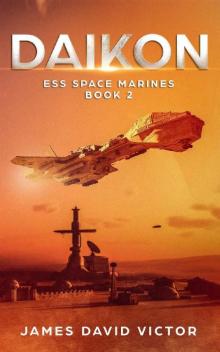 Daikon (ESS Space Marines Book 2)
Daikon (ESS Space Marines Book 2)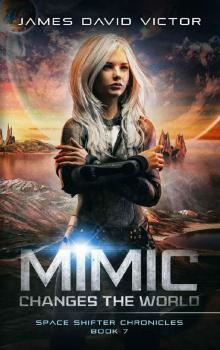 Mimic Changes the World
Mimic Changes the World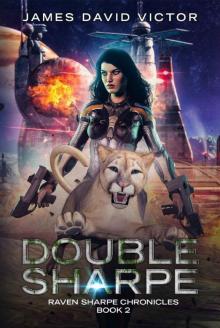 Double Sharpe
Double Sharpe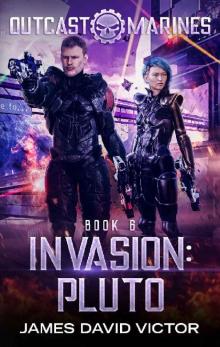 Invasion- Pluto
Invasion- Pluto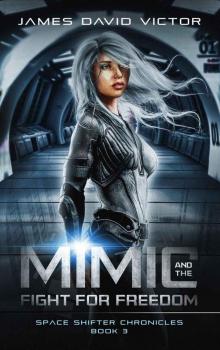 Mimic and the Fight for Freedom (Space Shifter Chronicles Book 3)
Mimic and the Fight for Freedom (Space Shifter Chronicles Book 3)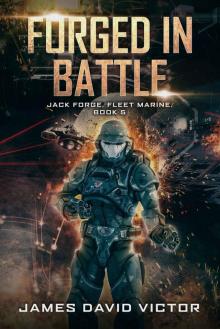 Forged in Battle (Jack Forge, Fleet Marine Book 5)
Forged in Battle (Jack Forge, Fleet Marine Book 5)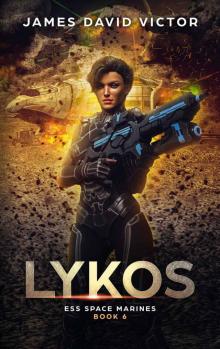 Lykos (ESS Space Marines Book 6)
Lykos (ESS Space Marines Book 6)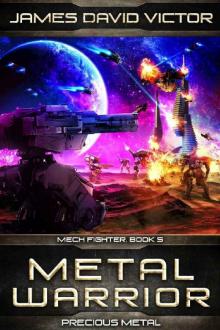 Metal Warrior: Precious Metal (Mech Fighter Book 5)
Metal Warrior: Precious Metal (Mech Fighter Book 5)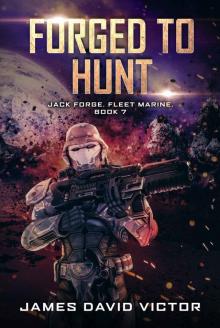 Forged to Hunt
Forged to Hunt Earth Space Service Space Marines Boxed Set
Earth Space Service Space Marines Boxed Set Alpha Rises
Alpha Rises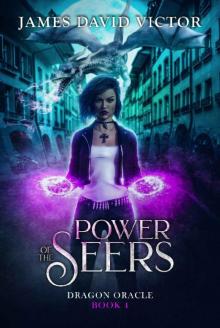 Power of the Seers (Dragon Oracle Book 4)
Power of the Seers (Dragon Oracle Book 4)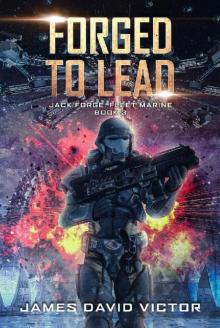 Forged to Lead (Jack Forge, Fleet Marine Book 3)
Forged to Lead (Jack Forge, Fleet Marine Book 3) Nebula (ESS Space Marines Book 4)
Nebula (ESS Space Marines Book 4)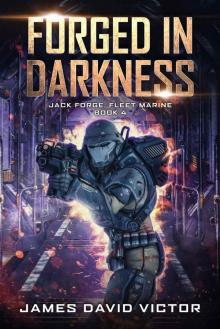 Forged in Darkness
Forged in Darkness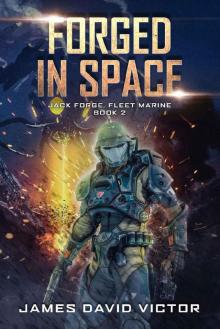 Forged in Space
Forged in Space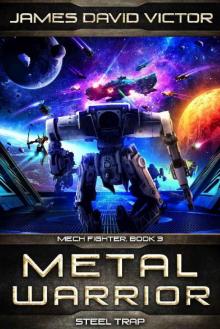 Metal Warrior: Steel Trap (Mech Fighter Book 3)
Metal Warrior: Steel Trap (Mech Fighter Book 3)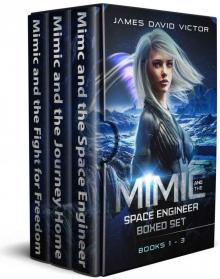 Mimic and the Space Engineer Boxed Set, Books 1 - 3
Mimic and the Space Engineer Boxed Set, Books 1 - 3 World Breaker Boxed Set (ESS Space Marines Omnibus Book 3)
World Breaker Boxed Set (ESS Space Marines Omnibus Book 3) Forged to Lead
Forged to Lead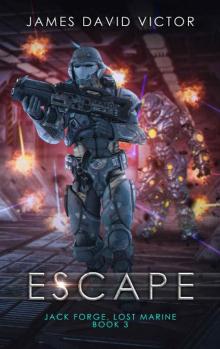 Escape (Jack Forge, Lost Marine Book 3)
Escape (Jack Forge, Lost Marine Book 3)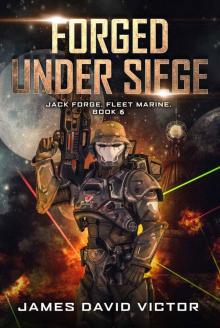 Forged Under Siege
Forged Under Siege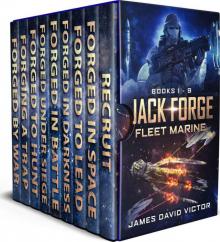 Jack Forge, Fleet Marine Boxed Set (Books 1 - 9)
Jack Forge, Fleet Marine Boxed Set (Books 1 - 9)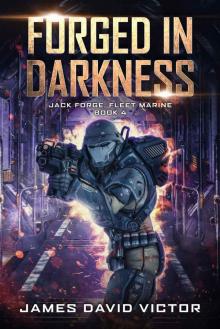 Forged in Darkness (Jack Forge, Fleet Marine Book 4)
Forged in Darkness (Jack Forge, Fleet Marine Book 4)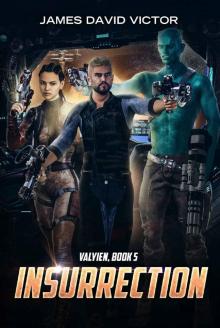 Insurrection
Insurrection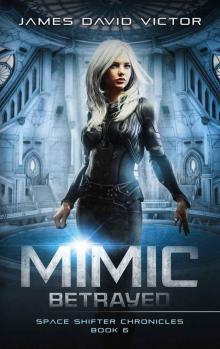 Mimic Betrayed (Space Shifter Chronicles Book 6)
Mimic Betrayed (Space Shifter Chronicles Book 6)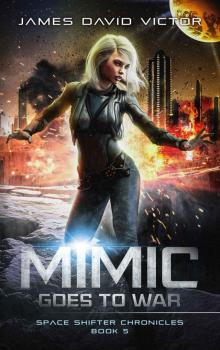 Mimic Goes to War (Space Shifter Chronicles Book 5)
Mimic Goes to War (Space Shifter Chronicles Book 5)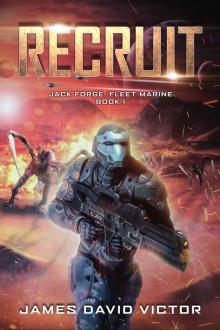 Recruit (Jack Forge, Fleet Marine Book 1)
Recruit (Jack Forge, Fleet Marine Book 1)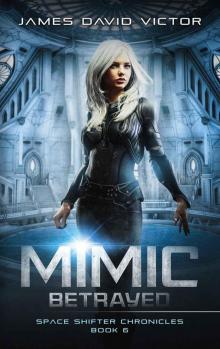 Mimic Betrayed
Mimic Betrayed Power of the Seers
Power of the Seers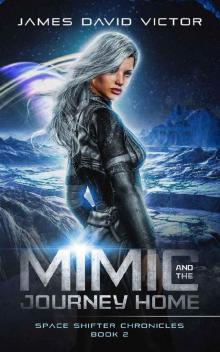 Mimic and the Journey Home (Space Shifter Chronicles Book 2)
Mimic and the Journey Home (Space Shifter Chronicles Book 2)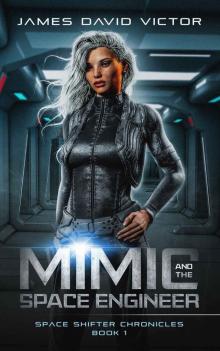 Mimic and the Space Engineer (Space Shifter Chronicles Book 1)
Mimic and the Space Engineer (Space Shifter Chronicles Book 1)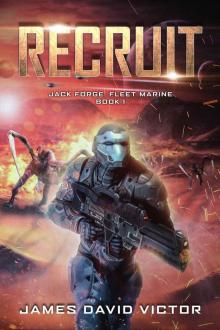 Recruit
Recruit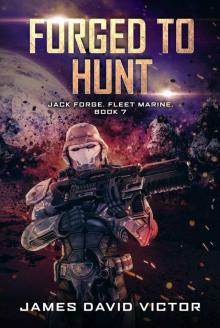 Forged to Hunt (Jack Forge, Fleet Marine Book 7)
Forged to Hunt (Jack Forge, Fleet Marine Book 7)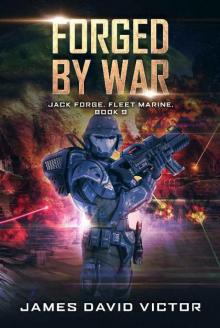 Forged by War (Jack Forge, Fleet Marine Book 9)
Forged by War (Jack Forge, Fleet Marine Book 9) Pursuit (Silver Cane Book 1)
Pursuit (Silver Cane Book 1) Zenith (ESS Space Marines Book 1)
Zenith (ESS Space Marines Book 1)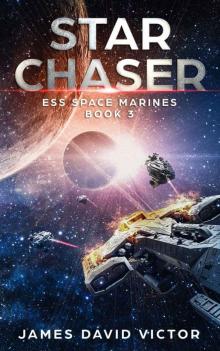 Star Chaser (ESS Space Marines Book 3)
Star Chaser (ESS Space Marines Book 3)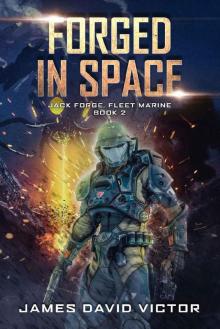 Forged in Space (Jack Forge, Fleet Marine Book 2)
Forged in Space (Jack Forge, Fleet Marine Book 2)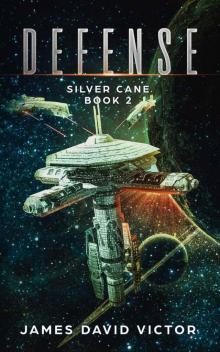 Defense (Silver Cane Book 2)
Defense (Silver Cane Book 2) Infiltrate (Silver Cane Chronicles Book 3)
Infiltrate (Silver Cane Chronicles Book 3) Alpha Rises (Valyien Book 2)
Alpha Rises (Valyien Book 2)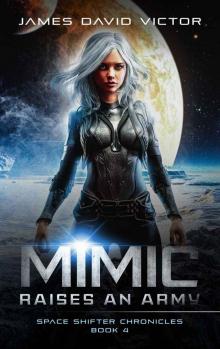 Mimic Raises an Army
Mimic Raises an Army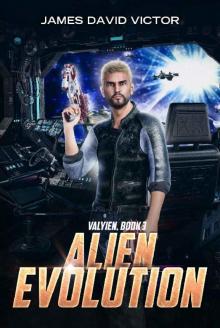 Alien Evolution (Valyien Book 3)
Alien Evolution (Valyien Book 3)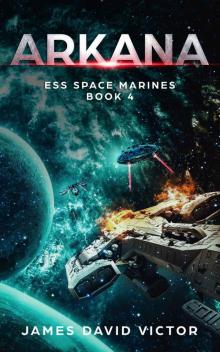 Arkana (ESS Space Marines Book 4)
Arkana (ESS Space Marines Book 4)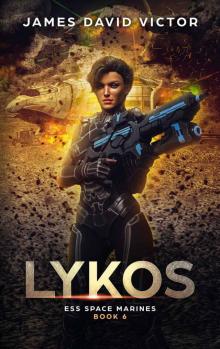 Lykos
Lykos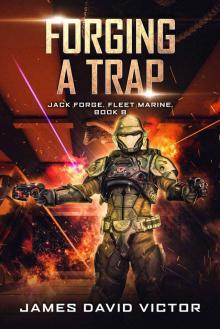 Forging a Trap
Forging a Trap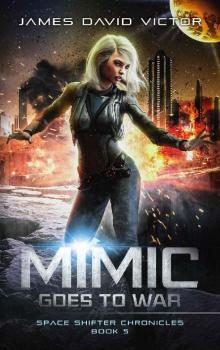 Mimic Goes to War
Mimic Goes to War Earth Space Service Boxed Set: Books 1 - 3 (ESS Space Marines Omnibus)
Earth Space Service Boxed Set: Books 1 - 3 (ESS Space Marines Omnibus) Stranded (ESS Space Marines Book 7)
Stranded (ESS Space Marines Book 7)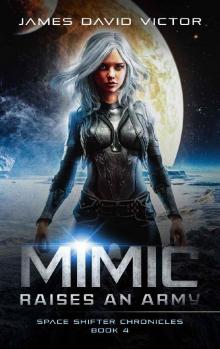 Mimic Raises an Army (Space Shifter Chronicles Book 4)
Mimic Raises an Army (Space Shifter Chronicles Book 4)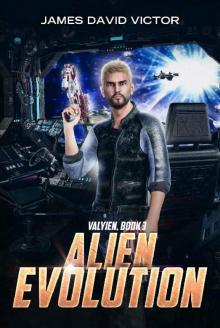 Alien Evolution
Alien Evolution